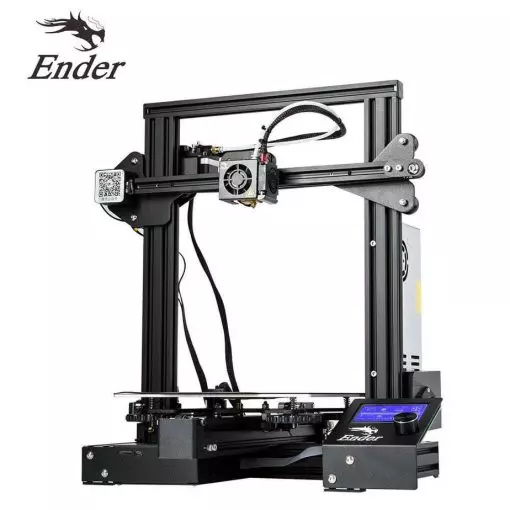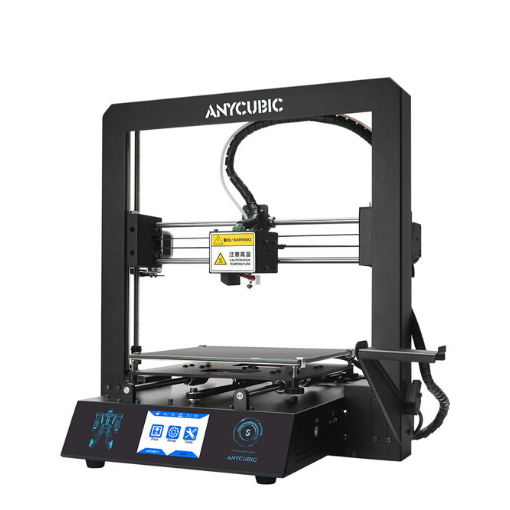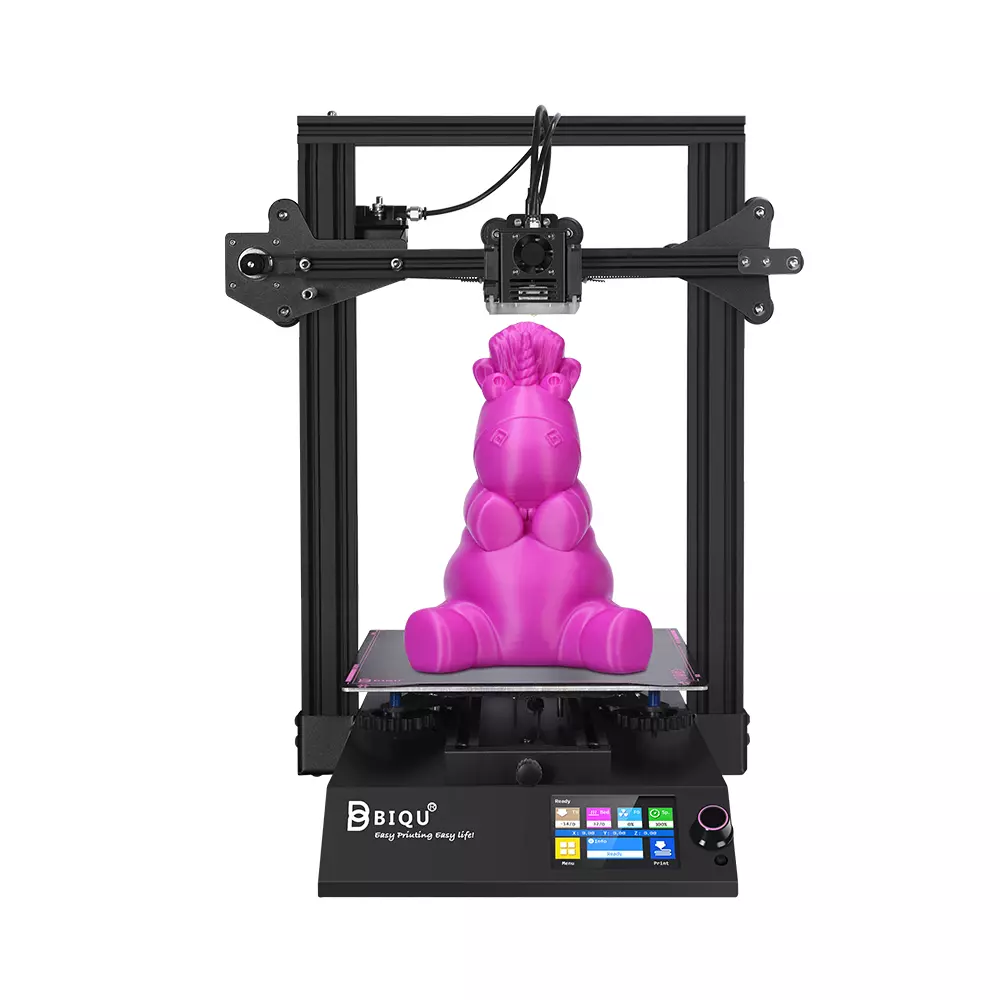Compare Ender 3 vs Mega S vs BIQU B1
Comparison between the best 3D printers
Choose the best 3D printer at the best price. The cheapest 3D printers are here.
Buy a 3D printer here with 3D Fila.
 |
 |
 |
|
| Model | Ender 3[BUY Ender 3] |
Mega S |
BIQU B1 |
| Printing Material | Filament | Filament | Filament |
| Estimated price | $210,00 | $149,00 | $269,00 |
| Fabricante | Creality 3D | Anycubic | BigTreeTech |
| Release Year | 2018 | 2019 | 2020 |
| Print Volume [mm] | 220x220x250 | 210x210x205 | 235x235x270 |
| Printer Size [mm] | 440x440x465 | 405x410x452 | 412x402x492 |
| Weight [kg] | 6,62 | 14,5 | 8,00 |
| Power Loss Recovery | NO | YES | YES |
| Enclosed printer | NO | NO | NO |
| Bed Leveling | Manual | Manual | Manual |
| Filament End Sensor | NO | YES | YES |
| Bed type | Heated | Heated | Heated |
| Power supply system | Bowden | Bowden | Bowden |
| Standard nozzle | 0,4 | 0,4 | 0,4 |
| Maximum Nozzle Temperature [°C] | 255 | 260 | 250 |
| Maximum Bed Temperature [°C] | 110 | 110 | 100 |
| Maximum printing speed [mm/s] | 180 | 100 | 100 |
| Filament holder | YES | YES | YES |
| Camera for supervision | NO | NO | NO |
| Recommended filaments | PLA, TPU, ABS, PETG | PLA, TPU, ABS, PETG | PLA, TPU, ABS, PETG |
| Recommended slicers | Cura, Simplify, Slic3r | Cura, Simplify, Slic3r | Cura, Simplify, Slic3r |
| Maximum Resolution [mm] | 0,1 | 0,1 | 0,1 |
| Processor | 8 bits | 8 bits | 32 Bits BTT SKR V 1.4 |
| Display | Mono | Touchscreen TFT 2,8'' | Touchscreen TFT 3,5'' |
| Power Supply | 24V / 270W | 12V / 300W | 24V / 360W |
| Connectivity | SD / USB | SD / USB | SD / USB |
| Operating systems | Windows, Mac, Linux | Windows, Mac, Linux | Windows, Mac, Linux |
| Date of registration in the system | 2021-04-13 | 2021-04-15 | 2021-04-14 |
| Release date | 2018 | 2019 | 2020 |
| Extra features | The Ender 3 V1 is a DIY assembly 3D printer, a sales leader since 2017, standing out for its cost-benefit. With a wide printing capacity, it has a CNC machined structure for precision and stability. It offers high-precision prints with low noise, thanks to its innovative V-profile and pulleys. It has a self-adhesive magnetic platform for easy removal of models and excellent adhesion. The Ender 3 heats up quickly, reaching 100°C in 5 minutes, ideal for agile prints. It includes protection against power failures, allowing you to resume printing after interruptions, saving time and material. | The Anycubic Mega S offers a printing platform with excellent adhesion, easy removal after cooling. It has a filament sensor for a better experience with flexible materials and a multilingual and intuitive color touchscreen. Assembly is quick, requiring only 8 screws and 3 connections. It has a large build volume (210 x 210 x 205 mm), high positioning accuracy and supports a variety of materials, including TPU, PLA, ABS and wood. It stands out for its solid metal structure, superior stability, high-quality printing with layer resolution of up to 50 microns, Ultrabase for easy adhesion and removal of parts, resumption of printing after power outage, high-quality extruder for flexible filaments, suspended filament support and stable structure that reduces shaking, improving printing quality. | The BIQU B1 is an advanced 3D printer with a silent 32-bit BTT SKR V1.4 motherboard and ARM Cortex-M3 CPU, offering DIY interfaces (I2C, SPI, WiFi) and dual Z-axis. Its dual BTT B1 TFT35 V3.0 operating system allows real-time monitoring and multiple printing modes, including G-code visualization effects. It stands out for its BIQU SSS (Super Spring Steel), ensuring easy model adhesion and simplified removal, with the possibility of using it on both sides. It includes a filament sensor, automatically pausing printing in case of filament breakage. The multicolored RGB lights integrated into the hotend allow you to view the printing status even at night. Additional notes include the need for a BIQU-specific Type-C cable and extra interfaces for smart filament sensor and BL Touch. |
| Support for multiple colors and materials (AMS and CFS) | NO | NO | NO |
Notes * |
|||
| Cost-benefit | 6 / 10 | 7 / 10 | 7 / 10 |
| Hardware | 0.5 / 10 | 2 / 10 | 2 / 10 |
| Screen | . | . | . |
| Print volume | 3 / 10 | 3 / 10 | 3 / 10 |
| Performance | 1 / 10 | 1 / 10 | 1 / 10 |
| [BUY Ender 3] |
Conclusion |
| In comparing the three 3D printers—Ender 3, Mega S, and BIQU B1—it is clear that each model has its own strengths and weaknesses, making the best choice highly dependent on user needs and priorities. The **Ender 3**, priced in the mid-range, is renowned for its cost-effectiveness, reliability, and ease of use. Although it lacks features like power loss recovery and filament sensors, its solid build quality and larger print volume compensate for these limitations. Its DIY assembly appeals to enthusiasts who prefer a customizable printer. On the other hand, the **Mega S** is the most budget-friendly option, appealing particularly to beginners. It offers essential features such as a filament sensor and power recovery, along with a straightforward assembly process. Its slightly smaller print volume may deter users looking for larger builds, but its stable metal frame and excellent print quality make it a commendable choice for entry-level users. Lastly, the **BIQU B1** represents a more advanced option. Though it carries a higher price tag, it justifies this with a 32-bit motherboard, a high level of silent operation, and advanced features like dual Z-axis and enhanced operating systems. The inclusion of a filament sensor and RGB status lights adds to its appeal for tech-savvy users, but it may be overkill for those seeking basic functionality. In conclusion, if budget is the primary concern, the **Mega S** is the best choice for newcomers to 3D printing. For users looking for a balance between performance and cost, the **Ender 3** stands out with its larger print volume and reliability. Meanwhile, the **BIQU B1** caters to more advanced users willing to invest in cutting-edge technology and features. Ultimately, the choice between these models hinges on individual requirements, including price sensitivity, desired features, and printing ambitions. |

